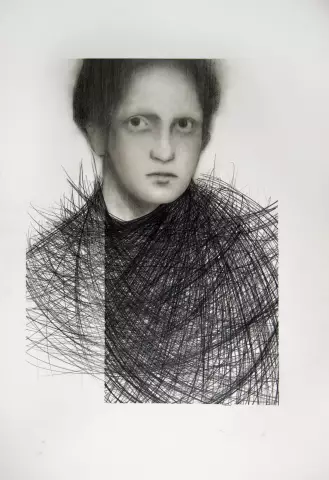- Author Rachel Wainwright [email protected].
- Public 2023-12-15 07:39.
- Last modified 2025-11-02 20:14.
Apraxia

Apraxia (inactivity, inactivity) is a disease in which the patient cannot perform any movements or gestures, although he has the physical ability and desire to perform them. In this disease, the cerebral hemispheres are affected, as well as the pathways of the corpus callosum. Apraxia can develop after a stroke, brain tumor, brain injury, infection, degenerative brain diseases (Alzheimer's disease, frontotemporal dementia, Huntington's disease, corticobasal ganglionic degeneration).
Types of apraxia
Distinguish between unilateral apraxia, in which movement disorders are manifested only on one side of the face or body, and bilateral. This disease is classified by symptomatic manifestations, as well as by the localization of damage to the cerebral hemispheres. By location in the brain, frontal, motor, premotor, cortical and bilateral apraxia are distinguished. With frontal apraxia, the sequence of motor acts is disrupted as a result of damage to the prefrontal region of the cerebral hemispheres. With motor apraxia, the patient is able to plan the necessary actions, but he cannot perform them. With premotor apraxia, the premotor region of the cerebral cortex is affected, as a result of which the ability to transform simple movements into more complex ones is lost. Bilateral apraxia occurs with bilateral lesions of the inferior parietal lobe of the cerebral hemispheres.
According to the types of cognitive disorders and skills, apraxia is akinetic, amnestic, ideatorial, ideokinetic, articulatory, kinesthetic, constructive, oral, spatial and afferent. The most difficult type of disease is articulatory apraxia. Articulatory apraxia is characterized by the patient's inability to articulate words, despite the absence of paresis and paralysis of the organs of articulation. Akinetic apraxia is caused by insufficient motivation to move. The amnestic form of the disease is characterized by a violation of voluntary movements. Ideatorial - the inability to designate a sequence of actions for the implementation of false movements. The kinesthetic type of the disease is characterized by impairment of voluntary motor acts. With a constructive form of the disease, the patient is not able to make a whole object from separate parts. Spatial apraxia is a violation of orientation in space.
Types of motor apraxia
With motor apraxia, there is a violation of both spontaneous actions and actions to imitate. This type of disease is most often one-sided. Motor apraxia is divided into two types - melokinetic and ideokinetic. With ideokinetic apraxia, the patient is not able to consciously perform simple movements, but at the same time he can perform them accidentally. He performs simple actions correctly, but not on assignment. The patient usually confuses the movements (touches the nose instead of the ear, etc.). Melokinetic apraxia manifests itself in the distortion of the structure of movements that make up a certain action and their replacement with indefinite movements in the form of moving and spreading the fingers instead of clenching the hand into a fist or threatening with a finger.
Afferent apraxia

Afferent apraxia usually develops against the background of damage to the postcentral (parietal) cerebral cortex. This disease is characterized by the inability of the patient to reproduce single poses (finger and hand, oral and articulation). However, such postures in this type of disease are easily reproduced together with habitual involuntary actions - dressing, eating.
Constructive apraxia
Constructive apraxia is considered a special and most common type of disease. It develops with damage to the parietal lobe, both right and left hemispheres. With this disease, the patient finds it difficult or unable to depict, sketch from memory the figures of animals and humans, geometric figures. At the same time, the patient distorts the contours of the object, does not complete its individual elements and details. By copying a person's face, he can draw one eye over the other, without drawing some parts of the face. With constructive apraxia, difficulties arise in choosing a place for drawing on paper.
Apraxia treatment
Psychiatrists and neurologists are involved in the treatment of apraxia, it all depends on the type and cause of the disorders. Most often, individual treatment regimens are prescribed using physiotherapy, speech therapy and work training. Patients with such disabilities require a psychologist, nurse, and social worker.
The information is generalized and provided for informational purposes only. At the first sign of illness, see your doctor. Self-medication is hazardous to health!






